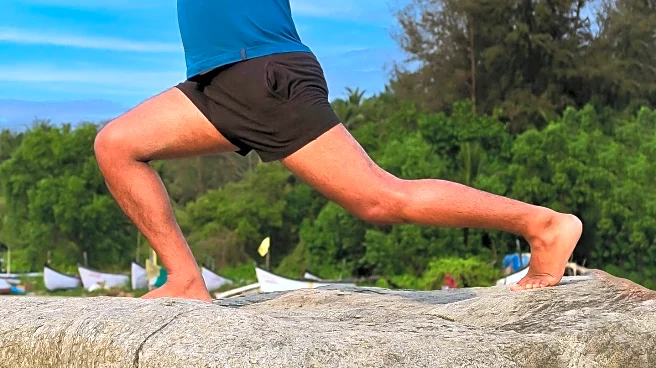What's Happening?
Recent research has revealed the fluid dynamics that make sighing beneficial for lung health. The study, conducted by scientists at ETH Zurich, focused on the physical movement of lung fluid when stretched
and recompressed. It found that taking deep breaths helps restore the ideal layering of lung fluids, making the lungs more deformable and compliant. This process reduces mechanical stress within the fluid, facilitating smoother breathing. The findings suggest that therapeutic treatments for lung failure may need revision to incorporate these insights, potentially leading to the development of materials that mimic or aid the multilayered structure of lung fluids.
Why It's Important?
The study's findings have significant implications for respiratory health and treatment strategies. By understanding the mechanics of lung fluid dynamics, healthcare providers can develop more effective treatments for conditions like lung failure. The research highlights the importance of deep breathing in maintaining lung compliance, which could lead to new therapeutic approaches that enhance respiratory function. This could benefit patients with chronic respiratory issues, offering them relief and improved quality of life. Additionally, the study provides a scientific explanation for the common experience of relief after sighing, emphasizing the importance of incorporating breathing exercises into daily routines for better lung health.
What's Next?
Further investigations are needed to determine how these findings can be applied to real-life patient care. Researchers may explore the development of artificial materials that replicate the multilayered structure of lung fluids, potentially leading to new treatments for respiratory conditions. Clinical trials could be conducted to test the effectiveness of these materials in improving lung compliance and overall respiratory health. Additionally, healthcare providers might consider integrating breathwork techniques into treatment plans for patients with respiratory issues, promoting the benefits of deep breathing exercises.
Beyond the Headlines
The study opens up discussions on the broader implications of breathwork and its role in holistic health practices. It highlights the potential for integrating scientific insights into alternative therapies, such as yoga and meditation, which emphasize breath control. This could lead to a greater acceptance of breathwork as a legitimate therapeutic practice, bridging the gap between traditional medicine and holistic approaches. Furthermore, the research underscores the importance of interdisciplinary collaboration in advancing healthcare innovations, combining insights from material science and respiratory medicine.












